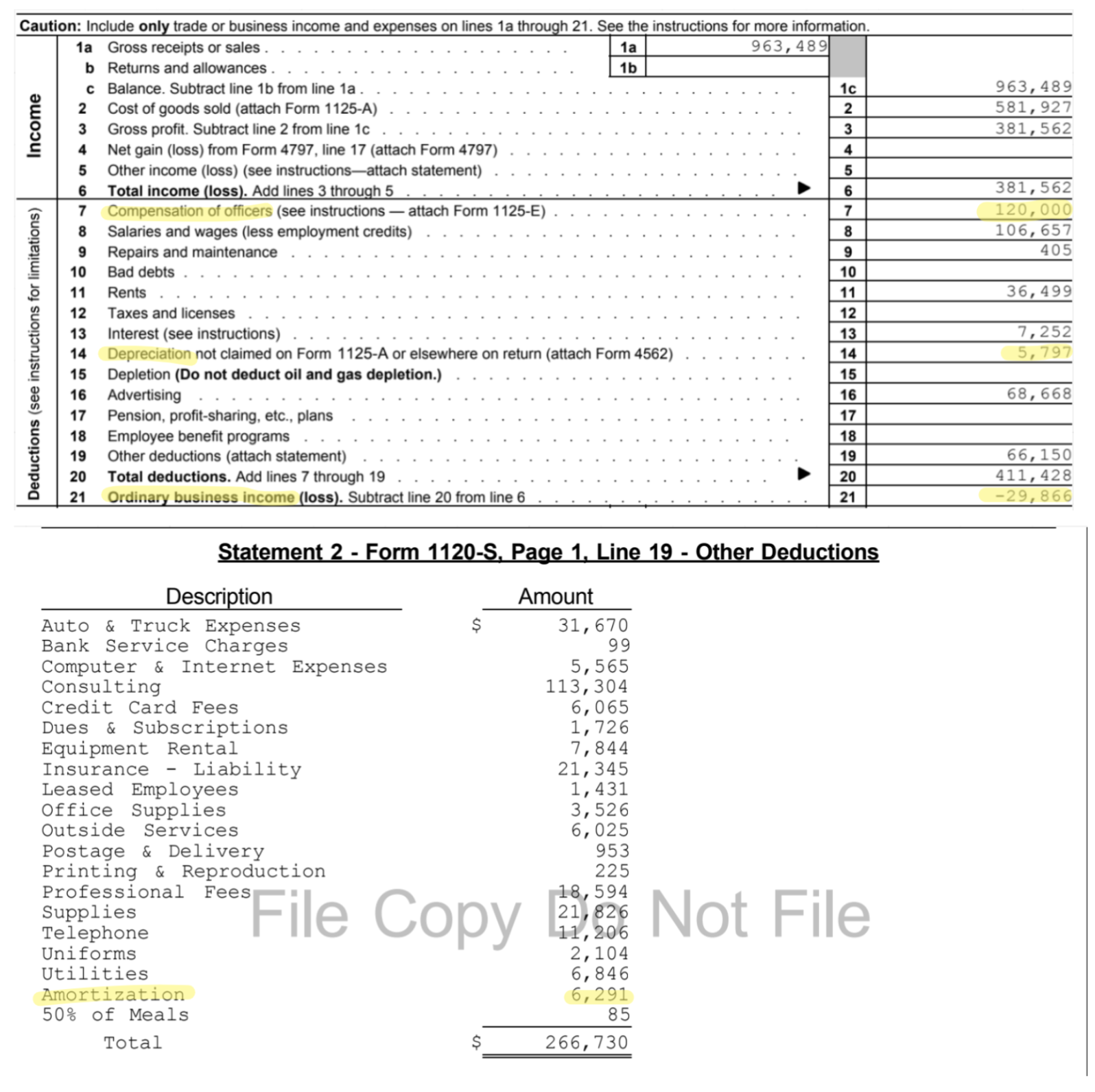Explore your options
Get a 100% confidential and complimentary business valuation.
If you're a small business owner, understanding your company's financial performance is essential. However, assessing your business's value is not as simple as looking at revenue or net income—that's where Seller's Discretionary Earnings (SDE) comes in.
SDE is a financial metric used to calculate a company's true earnings by adding back the owner's salary and other discretionary expenses to the net income. This allows small business owners to understand the real value of their company and make informed decisions about its future. In this blog post, we'll define and explain SDE, discuss its importance for small business owners, and provide step-by-step instructions for calculating it.
SDE is particularly important when it comes to selling a small business, as it is one of the key metrics that any potential buyer will consider. This is because SDE provides a more accurate picture of the business's true earnings, which can be used to determine its value. In general, small businesses are often valued at a multiple of their SDE.
The multiple used will vary depending on the industry, the size of the business, and other factors, but a common multiple is two to three times the SDE. For example, if a small business has an SDE of $100,000, it may be valued at $200,000 to $300,000. In addition to determining the value of the business, SDE can also be used to negotiate with potential buyers. By understanding the true earnings of the business, small business owners can make more informed decisions when negotiating the selling price and terms of the sale.
What is Seller's Discretionary Earnings (SDE) and how does it differ from Earnings Before Interest, Taxes, Depreciation, and Amortization (EBITDA)?
Seller's Discretionary Earnings (SDE) is a measure of a small business's profitability that takes into account the owner's salary, benefits, and other discretionary expenses. It is used to determine the business's potential cash flow available to a new owner-operator.
Put simply, Seller’s Discretionary Earnings (SDE) can be compared to a pie, where the total size of the pie represents the business's revenue, and the SDE is the slice of pie that the owner takes for their salary, benefits, and other discretionary expenses. The SDE represents the remaining portion of the pie that any new owner could potentially have to work with.
Seller's Discretionary Earnings (SDE) and Earnings Before Interest, Taxes, Depreciation, and Amortization (EBITDA) are both financial metrics used to assess a company's value. However, there are some key differences between the two.
While SDE takes into account the owner's salary and other discretionary expenses, EBITDA does not. Instead, EBITDA focuses on the company's operating performance by looking at its earnings before certain expenses are deducted. This can make EBITDA a useful metric for comparing the financial performance of different businesses, but it may not provide an accurate picture of a small business's true earnings. In contrast, SDE provides a more comprehensive view of a small business's financial performance by including the owner's salary and other discretionary expenses. As a result, SDE may be a more appropriate metric for small business owners who want to understand their company's true value.
Why is SDE Important for Small Business Owners?
Small business owners often have a personal stake in their business's success, and understanding its financial performance is critical to making informed decisions about its future. That's where SDE comes in. SDE is a valuable tool for small business owners because it helps to accurately assess the true financial performance of the business.
A business owner can grow Seller's Discretionary Earnings (SDE) by increasing revenue and/or by reducing expenses. Here are a few ways to do so:
Increase sales: This can be achieved through various means, such as improving marketing strategies, expanding the customer base, offering new products or services, or increasing prices.
Reduce cost of goods sold: Negotiate better prices with suppliers, streamline operations, and explore alternative sourcing options.
Control expenses: Evaluate all business expenses and cut down on any unnecessary expenses. For example, reducing rent, renegotiating contracts with vendors, or implementing cost-saving measures.
Optimize staffing: Evaluate the efficiency of your workforce and adjust staffing levels as necessary. Consider outsourcing or automating certain tasks to increase efficiency.
Increase productivity: Encourage your employees to work smarter, not harder. Implement processes that improve productivity, such as implementing new technologies or offering training programs.
By implementing these strategies, a business owner can increase revenue and reduce expenses, ultimately leading to an increase in SDE.

How to Calculate SDE
SDE is calculated by starting with the business's revenue, subtracting the cost of goods sold, and adding back owner-related discretionary expenses and non-cash expenses while also subtracting any additional expenses a new owner might incur.
Here's an example of how to calculate the SDE for a fictional business named "Joe's Auto Repair" using information that would be accessible on a tax return:
According to Joe's Auto Repair's tax return, the business had a net income of $75,000 in the past year. In addition, the tax return shows that the business incurred $10,000 in depreciation and amortization expenses and $5,000 in interest expenses. The tax return also shows that the business incurred a one-time expense of $2,500 for a new piece of equipment.
Joe, the owner of the business, paid himself a salary of $60,000 during the year. However, he also used the business credit card to pay for $8,000 in personal expenses, such as groceries and entertainment. Since these expenses are not directly related to the day-to-day operations of the business, they are considered discretionary expenses and should be added back to the SDE calculation.
Finally, Joe's Auto Repair operates out of a building that Joe owns, and he charges the business $1,000 per month in rent. Since this is a non-discretionary expense that would not be incurred by a new owner, it should be subtracted from the SDE calculation.
To calculate the SDE for Joe's Auto Repair, we would follow these steps:
Start with the net income of the business: $75,000
Add back any non-cash expenses: +$10,000 (depreciation and amortization)
Add back any interest expense: +$5,000
Add back any one-time expenses: +$2,500
Add back the owner's salary and any other discretionary expenses: +$68,000 ($60,000 salary + $8,000 in personal expenses)
Subtract any non-discretionary expenses: -$12,000 ($1,000/month in rent x 12 months)
The resulting SDE for Joe's Auto Repair is $138,500. This number can be used to determine the value of the business and to negotiate with potential buyers. It's important to note that this calculation is just an example and that the specific circumstances of each business can vary. To ensure accuracy, it's best to work with a financial professional who can guide you through the process and provide additional insights into your business's financial performance.
SDE Example
Now, let’s move on to a real world example. If you happen to have your businesses tax returns on hand and are interested in calculating SDE for yourself, you can follow the process outlined below. Fortunately, many of the figures needed to calculate your SDE are represented as distinct line items on a tax return. We’ve highlighted them below for ease of reference
Start with “Compensation of officers” or what you (and any co-owners) take in salary, which is $120,000 here. Then add “Ordinary business income”, or earnings, which in this case is negative, so subtract $29,866. Finally, add depreciation at $5,797 and amortization at $6,291, which you’ll find on the “Other Deductions” page. Add these up and you’ve got a rough estimate of your SDE, $102,222 for this business.
A CPA or business broker will likely be able to find other add-backs to further increase the SDE, but this calculation is a good starting point in most cases.

Conclusion:
Seller's Discretionary Earnings (SDE) is a valuable tool for small business owners looking to accurately determine the true earnings of their business. By taking into account all of the expenses and cash flows that are directly related to the day-to-day operations of the business, SDE provides a more accurate picture of the business's financial performance.
When it comes to selling a small business, SDE is a key metric that potential buyers will consider, and can be used to determine the value of the business and to negotiate with potential buyers. If you're a small business owner looking to sell your business, it's important to work with a professional who has experience with SDE and can help you accurately value your business.
At Beacon, a small business brokerage based in Austin, Texas (but operating nationwide), we have a team of experienced professionals who can guide you through the process and help you get the most value for your business. Contact us today to learn more about how we can help you sell your small business.
Explore your options
Get a 100% confidential and complimentary business valuation.

If you're interested in acquiring a Main Street business, Katie is your go-to person. Katie hails from Kansas City originally and majored in Art History at the University of Kansas. In her free time, she enjoys climbing, paddleboarding, and cooking.
Information posted on this page is not intended to be, and should not be construed as tax, legal, investment or accounting advice. You should consult your own tax, legal, investment and accounting advisors before engaging in any transaction.

Calder Capital

Sam Domino


